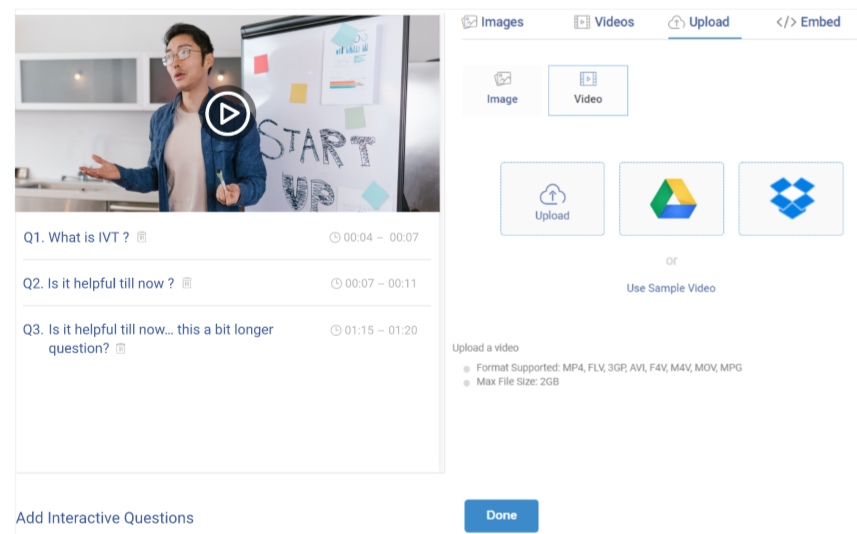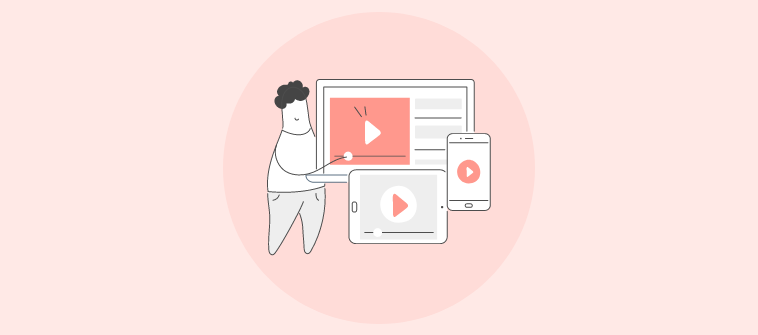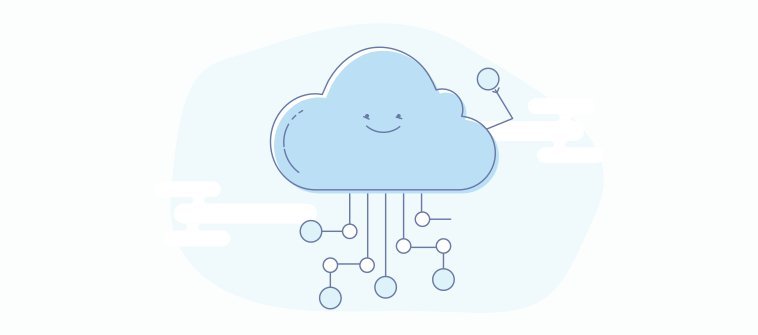Learning retention is a key identifier of learning success. Without it, learners will remain unable to apply knowledge. It also raises a big question on your learning reinforcement. And more painfully, your teaching and training efforts seem wasted.
A failure to retain information longer term is known as the forgetting curve. The concept was discovered by Hermann Ebbinghaus, a German psychologist. He pioneered the experimental study of human memory.
Like in educational settings, corporate learning emphasizes learner retention for obvious reasons. It enables learners to store information in their memory long term so that they can recall and put it to use in the future.
The time, labor, and resources you invest in employee training will go to waste if there’s a rapid decline in your learners’ memory.
So, what can you do to stop this?
You must implement science-backed methods and strategies that help with the retention of learning.
In this post, you’ll learn what learning retention is, how it works, and the effective ways to improve knowledge retention.
Keep reading to find out.
What Is Learning Retention?
Learning retention is a person’s ability to retain information in their long-term memory for easy recall and use sometime in the future. In other words, it’s how knowledge sticks in one’s memory for a longer time.
Learners with good retention capacity take in new information and they can remember it as and when required. This is regardless of the time span between the two activities.
An absence of retention leaves you with short-term memory, which is not good when learning key concepts and skills.
Learning retention works on the premise that human brains forget information quickly. It’s like putting fuel in an automobile that has a hole in its gas tank. Everything goes in vain and it leaves you feeling frustrated.
And here’s the science behind it:
Dr. Tomás Ryan, associate professor, School of Biochemistry & Immunology, & Trinity College Institute of Neuroscience, Trinity College Dublin, said:
“Memories are stored in ensembles of neurons called ‘engram cells’, and successful recall of these memories involves the reactivation of these ensembles. The logical extension of this is that forgetting occurs when engram cells cannot be reactivated. The memories themselves are still there, but if the specific ensembles cannot be activated, they can’t be recalled. It’s as if the memories are stored in a safe but you can’t remember the code to unlock it.”
How Does Learning Retention Work?
When there’s retention in learning, the human mind processes information more fully, enabling it to draw upon that information better in the future. It contrasts with assimilating information temporarily, which doesn’t help in any learning situation.
Learning retention improves the learning experiences of an individual since long-term memory recall is essential to flawless applications of knowledge in the future.
One’s areas of interest and deep engagement with learning materials are significant factors in ensuring long-term retention of information.
4 Factors That Impact Retention in Learning
Several factors are at play in ensuring learning retention among learners. It’s important to understand these factors so that you can check if they are present during the learning process.
Here are four key factors that generally affect the retention of knowledge.
1. Interest and Motivation
A learner’s level of interest and motivation behind a learning initiative play a significant role in the retention of learning.
When learners find a program interesting and are driven by a motive, they can retain information for a longer time.
This is because the human brain has been hardwired to focus on and remember things that it finds interesting.
2. Repetition
Repetition of learning materials is another key factor in learning retention. The more you repeat or practice a task, the better you retain it in your memory.
For example, school-going kids and even parents find it hard to remember the daily timetable. This is why they often stick it to a study board and refer to it daily.
3. Association
The ability of learners to associate learning content with real life and find meaning in them also helps them retain information longer.
For example, when they form a mental picture of how they’ll be able to work better after learning a new skill, it facilitates better learning, retention, and recall.
4. Multiple Channels
Different learners prefer different learning styles. While some are visual learners, some fare better with hands-on experiences.
Therefore, choosing the appropriate learning delivery method is crucial to improving learning retention in your learners.
Here’s a quick look at how to create a learning style quiz with a wide selection of question types to identify and meet different learning styles.
How to Improve Learning Retention in 10 Steps
There are several time-tested ways to ensure retentive learning, whether you are working with kids, teens or adult professionals. These approaches can be adopted as external factors to enhance learning retention, but keep in mind internal factors, like interest and motivation, are also at play.
1. Spaced Learning
Spaced learning or spaced repetition is based on the idea that learning becomes more effective when it’s repeated over a period of time. If you repeat information you take in, you tend to remember it longer.
It explodes the myth that one-time in-depth learning is enough to master a subject. For best results, learners should repeat learning after some intervals.
For example, you can break down a 1 to 2-hour-long employee training course into multiple modules or sessions of shorter durations with spaced intervals in between.
After that, let your learners revisit these modules or sessions multiple times over the next few days or weeks.
This will ensure better information retention, recall, and application.
2. Microlearning
Microlearning is about delivering bite-sized and highly focused pieces of information for easy uptake by learners. Short videos, quizzes, games, slides, and infographics are examples of microlearning.
Since this form of learning comes in small chunks, learners find them engaging, flexible, and convenient. They’re not only easy and quick to learn, but they also work around everyone’s schedules and pace.
Learning through a mobile LMS or learning management system is the best example of microlearning. Learners can watch a 2-minute how-to video or look up bulleted points in an employee manual anytime, anywhere through these applications.

Watch: What Is a Mobile LMS & How Can It Help Train Anytime, Anywhere?
3. Video-Based Learning
From music reels by Instagrammers to corporate executives’ path-breaking business ideas, videos are already a craze on social media. Luckily, enterprises are also fast catching up with the practice of using videos in employee education and training.
Videos are engaging by nature, and viewers can consume information easily and quickly. Human brains perceive visual information better, faster, and in larger quantities, resulting in longer memory retention.
So, whether it’s during onboarding or ongoing compliance training, employees prefer watching an engrossing video to going through pages of a text-only doc.
Make sure you include a video plan in your current and upcoming workplace training programs.

4. Blended Learning
One big advantage of blended learning is it supports a mix of online and offline learning methods. So, even if a learner follows one method as their primary means of learning, they can always supplement it with the other method.
This makes learning more effective and ensures better retention.
As a trainer, you can use blended learning to reach all your employees with different learning preferences. When your learners leverage different learning formats that activate different senses, it leads to better and longer information retention.
5. Engaging & Interactive Elements
This is one of the essential ingredients for improving learning retention. Learning content that promotes active engagement and interactivity is valuable. For this, you can employ learning methods like live webinars, quizzes, brain games, group discussions, and simulations.
These options make better alternatives to classroom lectures that only encourage passive learning. The idea is to make content eye-catching, relevant, and personalized to ensure impactful learning and retention.
Scenario-based learning is another engaging way to ensure better learning retention. By weaving life-like situations and simulations into a training program, you can test learners’ critical thinking and decision-making skills as they go through different job-related scenarios.
This makes learning more effective and memorable.
The following is an image grab of ProProfs Training Maker showing how you can use it to create scenario-based learning.

6. Learning From Mistakes
All human beings make mistakes, both in their personal and professional lives. But during the learning & development phase, they can use mistakes to their advantage.
Assuming that they are willing to learn from their mistakes, learners can use blunders to improve themselves.
Mistakes can be costly at times and they affect several processes, systems, and people as a domino effect. Such painful experiences make some mistakes memorable and enable learners to prevent a recurrence.
But mistakes should be seen as an opportunity to learn and unlearn a few things. This way, the identification of mistakes plays a vital role in retention.
7. Learning in the Flow of Work
When people learn in the course of their daily duties, retention becomes more effective. This is because they learn and apply their knowledge immediately while performing a task.
Learning opportunities are ever-present and they are always available on demand in such a situation. Since information is there in the moment of need, it bridges any potential gap between learning and doing.
For example, the ability to find quick and accurate answers to queries via an online knowledge base makes learning effortless and easier to retain.
So, this is another method you can use to make learning more accessible and retentive.

Watch: How to Create a Stunning Knowledge Base in 5 Minutes
8. Assessments
Learner evaluations through quizzes, tests, and assessments provide another useful means to improve retention.
When you put learners to the test, it exposes them to new information, how it works, and how to apply it in their day-to-day job roles. They can monitor their own learning pace, milestones, and challenges. All of this helps in better information retention.
Always include testing systems such as online quizzes in your training courses. Make them engaging to ensure a higher completion rate.
Post-training assessments can help learners exercise their minds and retrieve information for long-term memory.

Before we move to the next point, let’s look at a case study of a tutor who used testing to aid his students’ learning and memory.
Who: Ali A. Habib
What Does He Do?: Ali is a tutor at Jaber Bin Hayan Primary Boys’ School, Bahrain, a certified Microsoft Innovative Educator, & owner of an application for online story reading tests.
Problem He Faced: He encountered that teaching elementary school kids and sharing the course material with them was time-consuming. Ali needed software that could streamline his job and help him easily create engaging tests and share them quickly.
Solution He Adopted: Ali came across ProProfs Training Maker as a technological solution for courses and testing. It provided him the tremendous capacity to do everything that he used to imagine. It was helpful for him as well as his students.
He could create online tests easily and enhance the interest of his students in taking those tests. The online flashcards helped them greatly by aiding their learning and memory. The solution had a dramatic impact on the learning and retention level of his students throughout the year.
Results He Got: Ali witnessed a remarkable improvement in how his students study with these tools. ProProfs Training Maker simplified and sped up how he prepared his lessons and tests. Likewise, his students could solve tests at home without any particular problem.
With quizzes, he is now able to assess and bridge the learning gaps of his students.
Here’s a video testimonial by Ali.
Watch: How ProProfs Tools Helped Me Create Electronic Tests & Eased My Job
9. Teaching Others
In learning you will teach, and in teaching you will learn.
It’s a well-known fact that we learn in the process of teaching others. We develop research and communication skills when we teach others.
In the context of corporate training, teaching others can include assisting a peer in learning, participating in a Q&A forum, and brainstorming ideas with your teammates.
During these activities, you reinforce your own knowledge acquisition by engaging in knowledge sharing with others. Teaching someone helps improve retention by enabling you to interact with learning materials in creative ways.
10. Real-World Applications
People don’t learn just for the sake of it. Learning is tied to a specific goal or outcome in the foreseeable future. This can’t be truer than when we talk about corporate learning.
The human brain becomes unreceptive to things that it finds irrelevant to its needs or the environment it finds itself in. Therefore, it’s necessary to create learning plans that directly align with your learners’ roles, needs, and lives.
This will make retention in learning far better.
That’s why it’s important to communicate the objectives of a training program before you start. You should demonstrate beforehand how the program will benefit and impact a learner’s professional life.
If there’s clarity like this about training, it adds to learners’ interest and they learn and retain information better.
Get Free Employee Training Software — All Features, Forever.
We've helped 567 companies train 200,000+ employees. Create courses in under a minute with our AI LMS or use 200+ ready-made courses on compliance, harassment, DEI, onboarding, and more!
The Learning Retention Pyramid
The National Training Laboratories developed the learning retention pyramid, also known as the cone of learning, during the 1960s. This model illustrates various learning methods and the associated retention percentage.
In other words, the pyramid shows how much information a learner can retain depending on the learning technique they use.
As you can see in the image below, traditional classroom lectures give the least retention rate of just 5%, while learning through teaching others gives a 90% retention rate.
The learning retention pyramid can help you adopt the most effective learning methods and achieve longer-term retention capacity in your learners.

Now that you know the basics of learning retention let’s take it further and see some of the methods you can use to improve retention in your learners.
Learning Retention FAQs
What is the difference between memory and retention?
Memory denotes how human minds store and recall information. It’s the ability to remember information over a period of time. In this sense, it’s an expression of acquired knowledge about someone or something.
Retention refers to the process of storing information in someone’s long-term memory so that they can use it later. It’s the act of retaining or holding information over an extended period. So, memory may be long or short-term but retention is always longer-term.
How do people learn and recall information?
Recall is a function of attention and thinking. First, people pay attention to some information, person, or thing. Then they think about it. Concentration on an object of interest is key to effective learning and recall. Additionally, active involvement with a learning activity helps with better learning, retention, and recall. This is evident from the lower layers of activities in the learning retention pyramid.
How can I measure learning retention?
The best way to measure learner retention is through online assessments. Quizzes are the most popular examples. They come in different formats and with different question types. Video responses and preventing question skipping are other features. You can embed quizzes in your courses as a final assessment. You can use them before, during, and after a training session.
Watch this video to learn How to Choose the Best Quiz Software.
Make Training More Meaningful With Solid Learning Retention
It’s natural for you to expect that your learners retain as much information that they acquire during training as possible. Without retention, there will be no application of knowledge to daily work situations.
If you’re facing issues with a poor learning retention rate among your employees and it’s raising a big question mark over your efforts, then it’s time to take some action.
Understand how learning retention works, know the factors that influence retention, and implement the effective methods we went through above to improve the retention capacity of your learners.
Engaging online courses and quizzes and a user-friendly LMS to deliver them can be a part of your retention improvement plans.
Be patient and keep in mind it will take some practice from both your and your learners before you can see measurable results.44136


 We'd love your feedback!
We'd love your feedback! Thanks for your feedback!
Thanks for your feedback!








